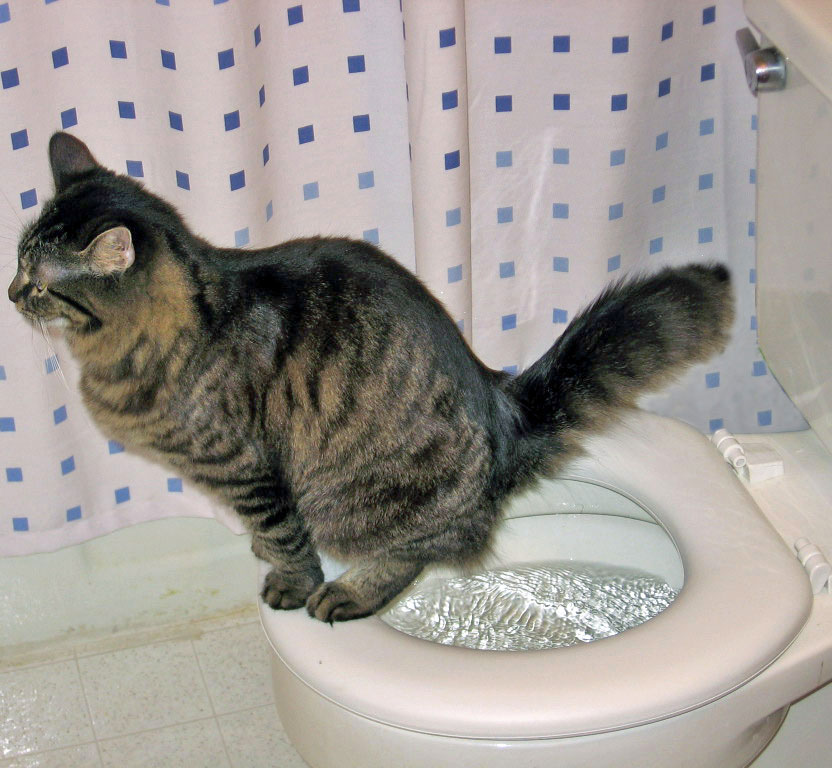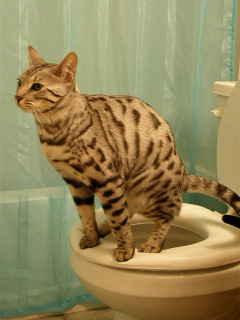Presented here in the next paragraph you will find additional quality information when it comes to Don’t flush cat feces down the toilet.

Intro
As feline proprietors, it's important to bear in mind how we throw away our feline pals' waste. While it might seem hassle-free to flush pet cat poop down the bathroom, this technique can have damaging consequences for both the setting and human health.
Ecological Impact
Flushing feline poop introduces dangerous pathogens and parasites right into the supply of water, posturing a significant threat to aquatic ecological communities. These contaminants can adversely influence marine life and concession water top quality.
Health Risks
Along with ecological issues, purging cat waste can likewise posture wellness dangers to human beings. Feline feces may consist of Toxoplasma gondii, a parasite that can create toxoplasmosis-- a potentially serious illness, especially for expecting females and individuals with weakened immune systems.
Alternatives to Flushing
Luckily, there are more secure and more accountable methods to take care of cat poop. Think about the adhering to choices:
1. Scoop and Dispose in Trash
The most common method of throwing away pet cat poop is to scoop it right into an eco-friendly bag and toss it in the garbage. Be sure to utilize a specialized trash inside story and take care of the waste promptly.
2. Use Biodegradable Litter
Opt for biodegradable cat litter made from materials such as corn or wheat. These litters are environmentally friendly and can be safely thrown away in the garbage.
3. Bury in the Yard
If you have a lawn, think about burying cat waste in a designated area away from veggie yards and water resources. Be sure to dig deep adequate to stop contamination of groundwater.
4. Mount a Pet Waste Disposal System
Buy a family pet garbage disposal system particularly developed for cat waste. These systems use enzymes to break down the waste, reducing smell and environmental influence.
Verdict
Accountable family pet ownership extends past giving food and sanctuary-- it likewise involves correct waste monitoring. By avoiding purging feline poop down the toilet and choosing alternate disposal methods, we can decrease our ecological footprint and shield human health and wellness.
Why Can’t I Flush Cat Poop?
It Spreads a Parasite
Cats are frequently infected with a parasite called toxoplasma gondii. The parasite causes an infection called toxoplasmosis. It is usually harmless to cats. The parasite only uses cat poop as a host for its eggs. Otherwise, the cat’s immune system usually keeps the infection at low enough levels to maintain its own health. But it does not stop the develop of eggs. These eggs are tiny and surprisingly tough. They may survive for a year before they begin to grow. But that’s the problem.
Our wastewater system is not designed to deal with toxoplasmosis eggs. Instead, most eggs will flush from your toilet into sewers and wastewater management plants. After the sewage is treated for many other harmful things in it, it is typically released into local rivers, lakes, or oceans. Here, the toxoplasmosis eggs can find new hosts, including starfish, crabs, otters, and many other wildlife. For many, this is a significant risk to their health. Toxoplasmosis can also end up infecting water sources that are important for agriculture, which means our deer, pigs, and sheep can get infected too.
Is There Risk to Humans?
There can be a risk to human life from flushing cat poop down the toilet. If you do so, the parasites from your cat’s poop can end up in shellfish, game animals, or livestock. If this meat is then served raw or undercooked, the people who eat it can get sick.
In fact, according to the CDC, 40 million people in the United States are infected with toxoplasma gondii. They get it from exposure to infected seafood, or from some kind of cat poop contamination, like drinking from a stream that is contaminated or touching anything that has come into contact with cat poop. That includes just cleaning a cat litter box.
Most people who get infected with these parasites will not develop any symptoms. However, for pregnant women or for those with compromised immune systems, the parasite can cause severe health problems.
How to Handle Cat Poop
The best way to handle cat poop is actually to clean the box more often. The eggs that the parasite sheds will not become active until one to five days after the cat poops. That means that if you clean daily, you’re much less likely to come into direct contact with infectious eggs.
That said, always dispose of cat poop in the garbage and not down the toilet. Wash your hands before and after you clean the litter box, and bring the bag of poop right outside to your garbage bins.
https://trenchlesssolutionsusa.com/why-cant-i-flush-cat-poop/

As a person who reads about How to Dispose of Cat Poop and Litter Without Plastic Bags, I figured sharing that piece of content was essential. Enjoyed reading our write up? Please share it. Help others find it. Thank-you for your time invested reading it.
Call Us Today